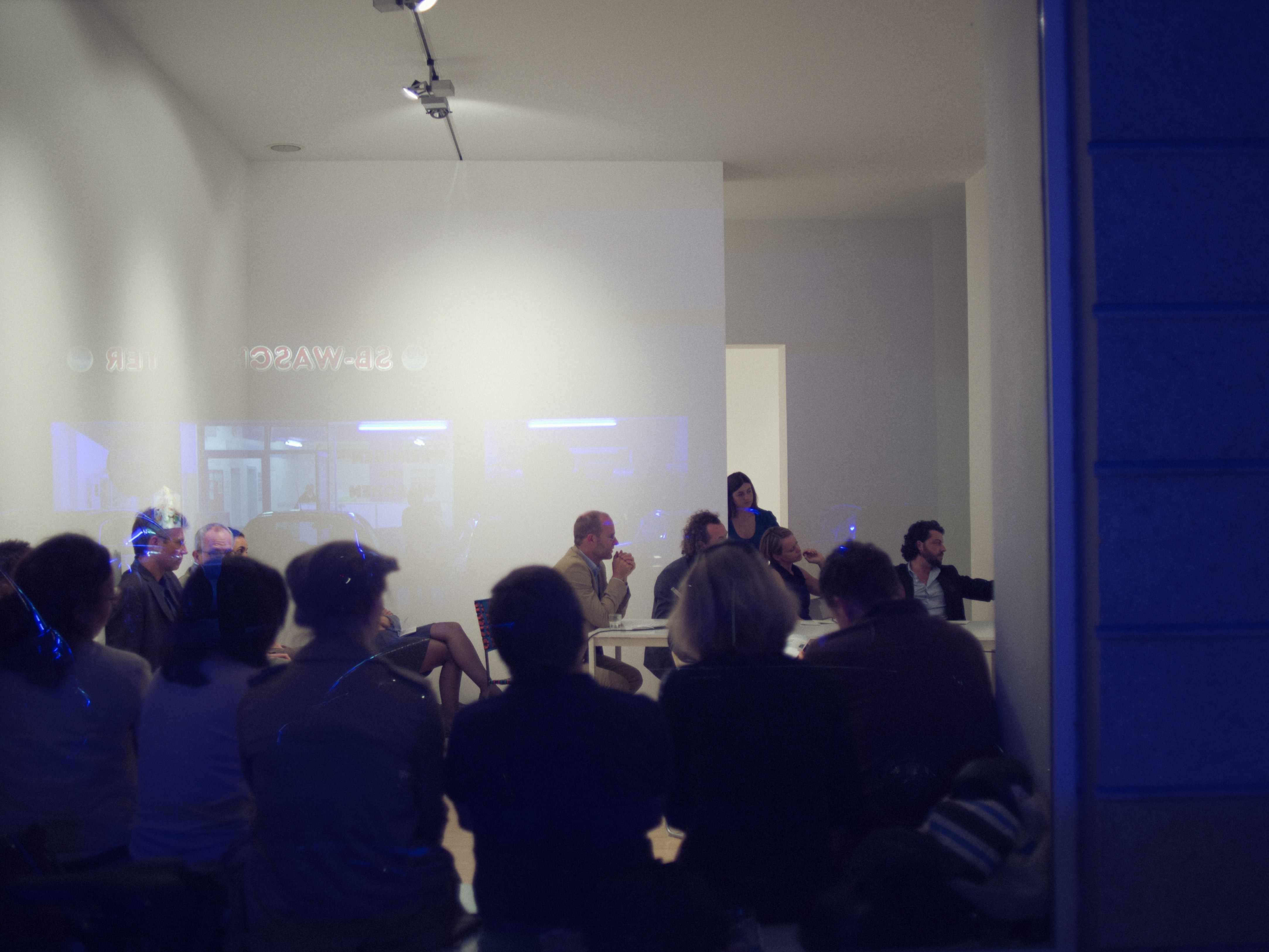
ANDRES LEPIK
Moderators
of Change /der
gesellschaftliche
Auftrag der
Architektur
WEDNESDAY, 11 JULY 2012
STATEMENT
Architektur prägt Gesellschaft. Vor allem in ihren gebauten Manifestationen übt sie langfristige und tiefgreifende Wirkungen auf Individuen und Gemeinschaften aus – auch auf jene, die keine aktive Mitsprache über ihre Konzeption und Gestaltung haben. Architektur ist daher, mit wenigen Ausnahmen, immer eine res publica. Wenn aber heute bereits mehr als ein Drittel der Weltbevölkerung in sogenannten „informellen“ Siedlungen lebt, d.h. selbst errichteten und selbst organisierten Slums, und auch die anderen zwei Drittel nur zu einem verschwindend geringen Prozentsatz in den Genuss von gut gestalteten Lebensräumen kommen, stellt sich die Frage: Für welche Gesellschaft(en) werden heute Architekten ausgebildet? Und: was ist ihr Auftrag? Sind sie als „Starchitekten“ in erster Linie Dienstleister für eine politisch und ökonomisch machtvolle Elite? Einige Architekten haben sich aber in den letzten Jahren aktiv und aus eigener Initiative jenen Gesellschaftsschichten zugewandt, die üblicherweise nicht als Auftraggeber in Frage kommen. Mit langfristigem persönlichem Engagement, mithilfe partizipativer Planungsmethoden, unter Einbeziehung lokaler Materialien und oft genug auch mit sehr geringen Budgets entwerfen und realisieren diese Architekten Bauten, die auf eine dauerhaft positive Veränderung gesellschaftlicher Bedingungen zielen und zugleich eine hochwertige Ästhetik aufweisen. Dabei gehen sie nicht von politischen Utopien oder sozialen Theorien aus, sondern greifen unmittelbar in die vorgefundene Realität ein und richten ihre Entwurfsstrategien jeweils an den konkreten Bedingungen aus. Solche Architekturprojekte zielen auf langfristige und mehrschichtige Wirkungen in unterversorgten Gesellschaften („empowerment“) und das nicht nur in Entwicklungsländern sondern auch an den ‚blind spots’ der hoch entwickelten Weltregionen. Diese Architekten tragen dazu bei, dass ihre Rolle nicht mehr nur als auftragsbezogene Top-Down-Planer verstanden wird, sondern als Moderatoren eines sozialen Wandels.
—
Architecture shapes society. In its built manifestations in particular, it exerts deep and sustained influences on individuals and communities – including those that have no active say in its design and form. With few exceptions, architecture is thus always a res publica. But today over one-third of the world‘s population live in what are known as ‚informal‘ settlements – that is, slums they have built and organized themselves – and only a fraction of the remaining two-thirds enjoy the benefits of well-designed spaces for living. Given this, the question arises: Just what is the society or societies for which the architects of today are trained and educated? And what exactly is their role? Are they primarily ‚starchitects‘ – that is, service providers for a politically and economically powerful elite? In recent years some architects have decided to take independent action and have turned their attention to those sectors of society that do not generally fall into the client bracket. By pledging long-term personal commitment, using participative planning methods, making use of local building materials and frequently on tiny budgets, these architects create buildings that are designed to generate a permanent positive change in social conditions but that also have high aesthetic standards. Their creators make no assumptions concerning political utopias or social theories, instead intervening directly in the reality they find around them and aligning their design strategies to the conditions in the field. Architectural projects such as these have the purpose of creating long-term multi-layered impacts in poorly supplied sectors of society (‚empowerment‘). They do not confine their scope to emerging countries, but also address the ‚blind spots‘ of highly developed global regions. These architects contribute to an understanding of their role which extends beyond that of mere top-down planners driven by their next commission, and embrace a position as moderators of social change.








VIDEO
POLITICAL
SPACE
Im aktuellen Panel mit dem Titel „Moderators of Change“ sind zwei Q+A-Themenschwerpunkte wiederzufinden: Resources + Political Space. Resources, weil man schon mit sehr einfachen Mitteln und seinem gesunden Menschenverstand seine Umwelt mitgestalten kann. Political spaces, weil gesellschaftliches Engagement immer auch einen öffentlichen und damit politischen Raum generiert. Dieses Engagement – gerade auch im politischen Sinne – ist nicht immer von Seiten der Autoritäten erwünscht. Kaum ein Ort, den wir uns aneignen, den wir verändern wollen, ist wirklich neutral, frei von Auflagen, Bedingungen und Geschichte. Wir agieren also immer im Kontext. Die aktive Gestaltung unserer Städte liegt in unserer Verantwortung als Zivilgesellschaft.
–
The latest Panel, entitled „Moderators of Change“, reflects two focal Q+A themes: Resources and Political Space. Resources, because it is possible to play a part in shaping our world by applying even extremely simple means combined with common sense. Political Space, because social engagement always generates a public, and thus a political, space. This engagement is not always approved by the authorities, particularly when it takes on a political form. Virtually none of the places we adopt as our own with the desire to change them is truly neutral, truly free from restrictions and regulations, from conditions and from history. All our actions therefore take place within a context. An active role in shaping our cities is an intrinsic part of our responsibility in a civil society.
ABOUT
ANDRES LEPIK
Andres Lepik ist ab Mai 2012 Professor für Architekturgeschichte und kuratorische Praxis an der Technischen Universität München und wurde als Direktor des Architekturmuseums der TUM berufen. Er war zuvor über viele Jahre Kurator für Architektur an der Neuen Nationalgalerie, Berlin und am Museum of Modern Art, New York, wo er zuletzt die Ausstellung „Small Scale, Big Change. New Architectures of Social Engagement“ zeigte.
—
Andres Lepik is Professor for Architectural History and Curatorial Practice at Technische Universität München (TUM) since May 2012 and was additionally appointed as Director of the TUM Architectural Museum. He previously worked for many years as Curator for Architecture at the Neue Nationalgalerie, Berlin, and at The Museum of Modern Art, New York, where he most recently presented the exhibition „Small Scale, Big Change. New Architectures of Social Engagement“.
QUESTIONS
Was bedeutet
„Empowerment“ in
Bezug auf Architektur
und Stadtplanung?
What is the meaning
of ‚empowerment‘ in
relation to architecture
and urban planning?
Welche Typologien von
Architektur entstehen durch
„informelles“ Bauen?
What typologies of
architecture are created
by ‚informal‘ building?
Welche Auslöser wirken,
damit sich alternative
Planungsmethoden
durchsetzen?
What triggers need
to take effect in
order to enable
alternative planning
methods to prevail?
Was passiert
gesellschaftlich durch
die Einbeziehung der
Nutzer in den
Bauprozess?
What happens in
societal terms when
users are involved
in the building
process?
Welche Potenziale
besitzen bereits bestehende
Beteiligungsformen wie
Genossenschaften,
Baugemeinschaften
oder sogar
Mitarbeiterbeteiligung?
What potential do
existing forms of
involvement and sharing
have, such as
cooperatives, joint
building ventures or
even employee
participation schemes?
Führen institutionalisierte
Prozesse wie das
Public-Private-Partnership,
PPP, zu gewünschten
Erfolgen?
Do institutionalized
processes suchas PPP,
public-private partnership,
achieve the desired success?
Mitmachen – aktiviert
es emotionale Bindung,
Zugehörigkeitsgefühl?
Macht es glücklich?
Is a ‚hands-on‘ approach
able to activate
emotional attachment
and a feeling of
belonging? Does it
create happiness?
Ist Ästhetik dabei
ein starkes Argument?
Does the factor of
aesthetics constitute a
strong argument?
Was sind die spürbaren
oder sogar messbaren
Qualitäten dieser sozialen
Veränderungen?
What are the
perceptible, or even
quantifiable, qualities
of these social
changes?
Wie können Erfahrungen
aus der Partizipation
in die gängige
Architekturpraxis
transplantiert werden?
How can
participation-based
experiences be translated
into current architectural
practice ?
Welche alternativen
Finanzierungs-
modelle gibt es?
Crowd-Funding?
What alternative
financing models
are available?
Crowd funding?
Ist „social“ das neue
„iconic“ – das neue
Alleinstellungsmerkmal
für Architekten?
Is ‚social‘ the
new ‚iconic‘ – the new
USP, unique selling point,
for architects?
︎
︎
︎︎︎
PANEL ARCHIVE BY TOPIC
RESOURCES
Panel 24
GIOVANNI VECCHIATO
social coding / spatial coding
2025
—
Panel 22
AIMÉE VAN WYNSBERGHE
AI + Ethics / Der unstillbare Hunger der KI
2024
—
Panel 15
SEMIR ZEKI
Is beauty really subjective and can it be quantified? / Cortex (A1)
2020
—
Panel 12
GIACOMO PIRAZZOLI
Green Up / (Crossinglab.com)
2014
—
Panel 8
MARTINA FINEDER and
THOMAS GEISLER
Design Clinic / Das Papanek Konzept
2012
—
Panel 5
MUCK PETZET
Now is tomorrow / Bauen im Bestand
2012
JAPAN
Panel 9
CHRISTINE VENDREDI-AUZANNEAU and
MARIO CARPO
Identicality
2013
—
Panel 7
TERUNOBU FUJIMORI
Der Zauber des Terunobu Fujimori / International Vernacular
2012
—
Panel 4
MASAMI SAITO and HANNES RÖSLER
The architecture of food / Gebaute Speisen
2011
—
Panel 3
MURIELLE HLADIK and WILFRIED KÜHN
Passage du temps
2011
—
Panel 1
MOMOYO KAIJIMA
Atelier Bow-Wow
2010
︎︎︎
PANEL 24 — Resources
GIOVANNI VECCHIATO
social coding / spatial coding
PANEL 23 — Carte blanche
MARKUS GABRIEL /
JOCELYN MACLURE
A Dinner Party
2.0
PANEL 22 — Resources
AIMÉE VAN WYNSBERGHE
AI + Ethics /
Der unstillbare Hunger der KI
PANEL 21 — Carte blanche
YSC – YOUNG SECURITY
CONFERENCE
Art, War and Revolution /
Ausdrucksformen der Verwüstung
und Genesung
PANEL 20 — Carte blanche
ALEX RÜHLE
Lesung: Europa – wo bist du?
Unterwegs in einem
aufgewühlten Kontinent
PANEL 19 — La Cittá
ELISABETH MERK
ANDREAS HOFER
MICHAEL BUHRS
MARKUS STENGER
Transformation der Orte / What’s your program?
PANEL 3 — Japan
MURIELLE HADIK and
WILFRIED KÜHN
Passage du temps
PANEL 2 — Political Space
SAMIR EL KORDY
and YING ZHOU
Political Space

